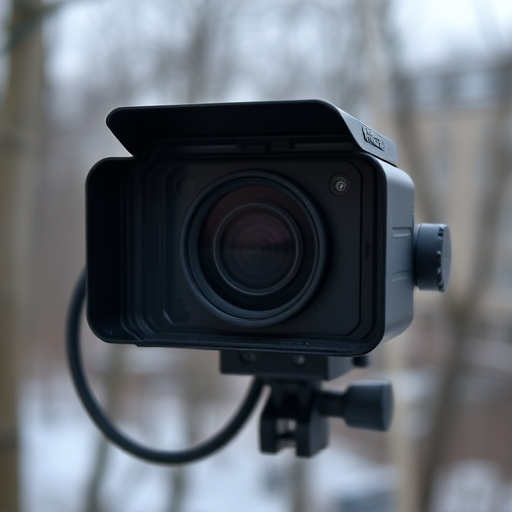Detecting mini surveillance cameras in apartments requires analyzing electromagnetic signals (2.4 GHz – 5 GHz) and frequency fluctuations. Using tools like signal analyzers, high-gain antennas, and EMF meters, along with software and physical barriers, can pinpoint camera locations. Staying informed about technology and local privacy laws ensures residents' privacy and security from Mini Surveillance Cameras for Apartments.
“Uncover hidden eyes: Navigating the world of mini surveillance cameras and electromagnetic signal detection. With the rise of compact, advanced recording devices, ensuring privacy in apartments has never been more critical. This comprehensive guide delves into understanding the subtle electromagnetic signals these ‘mini cameras’ emit, offering practical tips for signal detection. From best practices for apartment dwellers to exploring counter-technology, we equip folks with knowledge to protect their personal spaces from unwanted surveillance.”
- Understanding Electromagnetic Signals from Mini Cameras
- Best Practices for Signal Detection in Apartments
- Detecting Hidden Surveillance Devices: Tips and Tools
- Protecting Privacy: Countering Advanced Camera Technology
Understanding Electromagnetic Signals from Mini Cameras
Mini surveillance cameras, often discreetly placed in apartments, operate by emitting and receiving electromagnetic signals to transmit footage. Understanding these signals is crucial for effective detection. The frequency range used by mini cameras typically spans from 2.4 GHz to 5 GHz, overlapping with common wireless devices like Wi-Fi routers. This overlap can make signal detection more complex, as it requires specialized equipment to isolate the camera’s electromagnetic signature.
When looking for these signals, consider the unique patterns and characteristics specific to mini surveillance cameras. These may include irregular data bursts, distinct frequency fluctuations, or unusual power levels. By learning to recognize these patterns, you can enhance your chances of detecting hidden mini surveillance cameras in apartments, ensuring privacy and security for residents.
Best Practices for Signal Detection in Apartments
When it comes to detecting electromagnetic signals from mini surveillance cameras in apartments, best practices involve a combination of advanced techniques and everyday precautions. Start by understanding that these devices emit signals within specific frequency ranges, typically in the UHF or VHF bands. Using high-gain antennas and signal analyzers, you can scan for these signals through walls and other obstacles, identifying their source locations with precision.
Regularly update your detection software to stay ahead of evolving camera technology. Employ physical barriers like faraday cages around targeted areas to block signals effectively. Additionally, utilize signal jamming devices to disrupt camera transmissions temporarily during sensitive operations. Remember that the legality of surveillance activities varies by region, so always ensure compliance with local privacy laws and regulations regarding the use of mini surveillance cameras in apartments.
Detecting Hidden Surveillance Devices: Tips and Tools
Detecting hidden surveillance devices, often referred to as mini surveillance cameras for apartments, requires a combination of technological tools and keen observation. Start by conducting a visual inspection, looking for any unusual hardware or cables that might indicate the presence of a hidden camera. Check common areas like corners, ceiling fans, and wall switches.
Utilize specialized detection tools designed to identify electromagnetic signals emitted by covert cameras. These tools can range from basic EMF meters capable of picking up radio frequency emissions to more advanced digital forensics software that analyzes data patterns. Regularly updating your detection methods is crucial, as technology used in hidden surveillance devices evolves rapidly.
Protecting Privacy: Countering Advanced Camera Technology
In today’s digital age, advanced camera technology has made it easier than ever to capture and record moments, but this convenience comes at a cost when it threatens individual privacy. Mini surveillance cameras for apartments are just one example of how tiny devices can be used to invade personal spaces. To protect your privacy, understanding the detection of electromagnetic signals emitted by such devices is crucial.
Empowering yourself with knowledge about these signals can help you identify and counter clandestine monitoring. By being vigilant and utilizing specific tips for detecting electromagnetic signals, residents can safeguard their apartments from unwanted surveillance. This proactive approach ensures that personal moments remain private, even in the face of sophisticated camera technology.
While mini surveillance cameras for apartments offer increased security, it’s crucial to be proactive in protecting your privacy. Understanding electromagnetic signal detection techniques empowers residents to identify and counter hidden devices. By adopting best practices, utilizing specialized tools, and staying informed about advanced camera technology, you can navigate the digital landscape with greater peace of mind, ensuring your home remains a safe haven free from unwanted surveillance.
